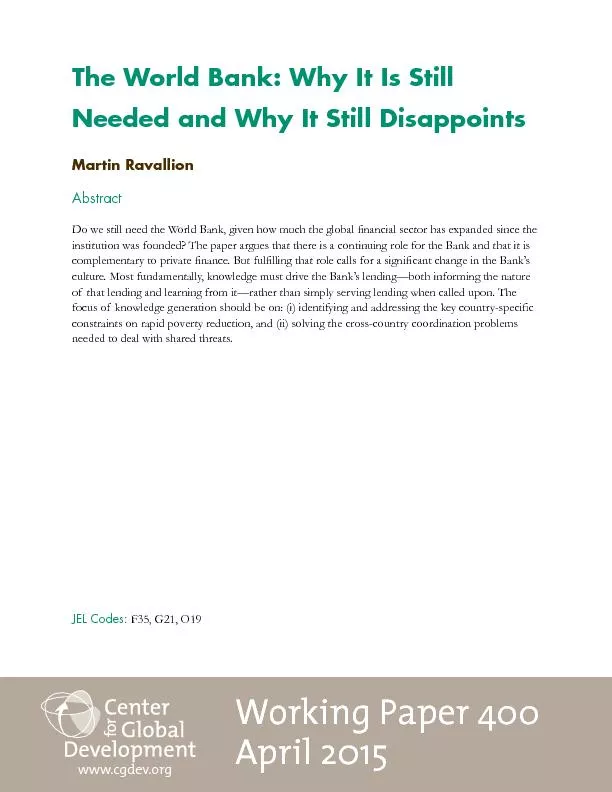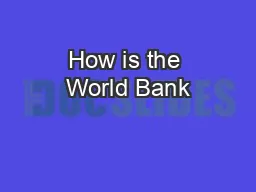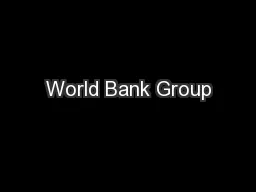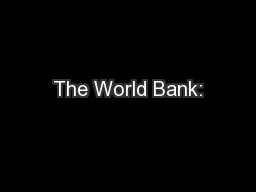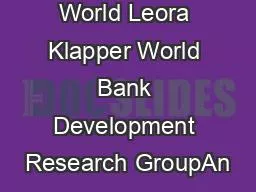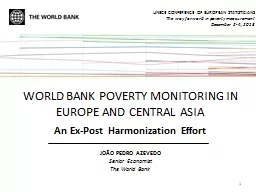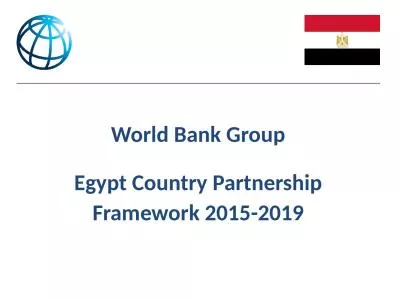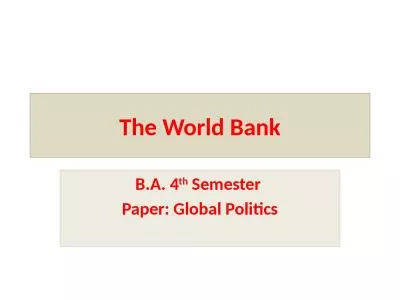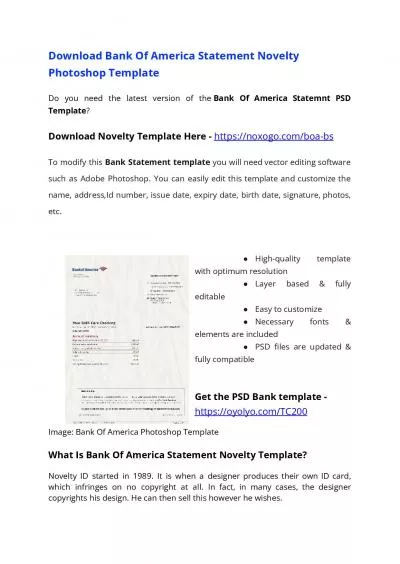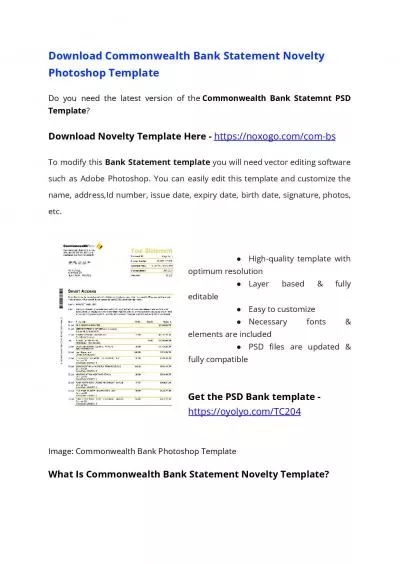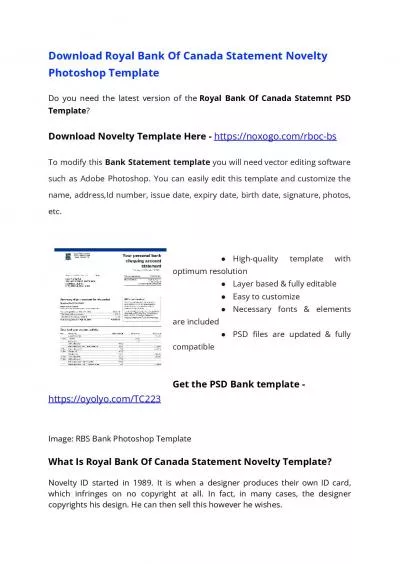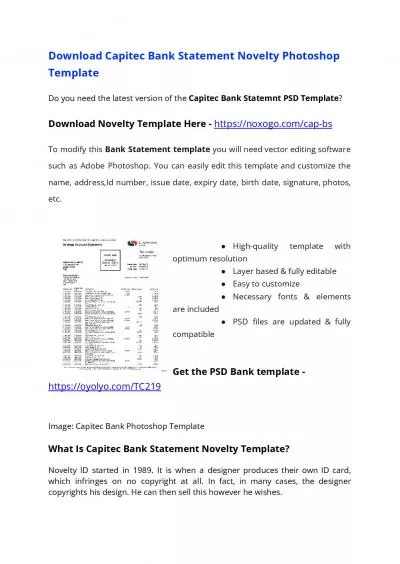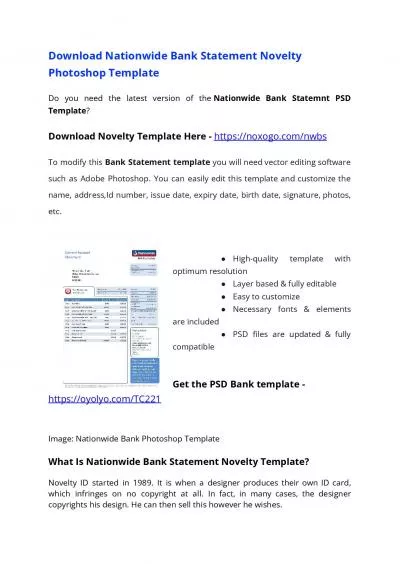PDF-The world bank why it is still needed and why it still disappoints
Author : conchita-marotz | Published Date : 2017-04-11
d Bank was founded 70 years agoThere have been prominent calls for radically reforming or even closing the institution on the grounds that international capital
Presentation Embed Code
Download Presentation
Download Presentation The PPT/PDF document "The world bank why it is still needed an..." is the property of its rightful owner. Permission is granted to download and print the materials on this website for personal, non-commercial use only, and to display it on your personal computer provided you do not modify the materials and that you retain all copyright notices contained in the materials. By downloading content from our website, you accept the terms of this agreement.
The world bank why it is still needed and why it still disappoints: Transcript
Download Rules Of Document
"The world bank why it is still needed and why it still disappoints"The content belongs to its owner. You may download and print it for personal use, without modification, and keep all copyright notices. By downloading, you agree to these terms.
Related Documents

